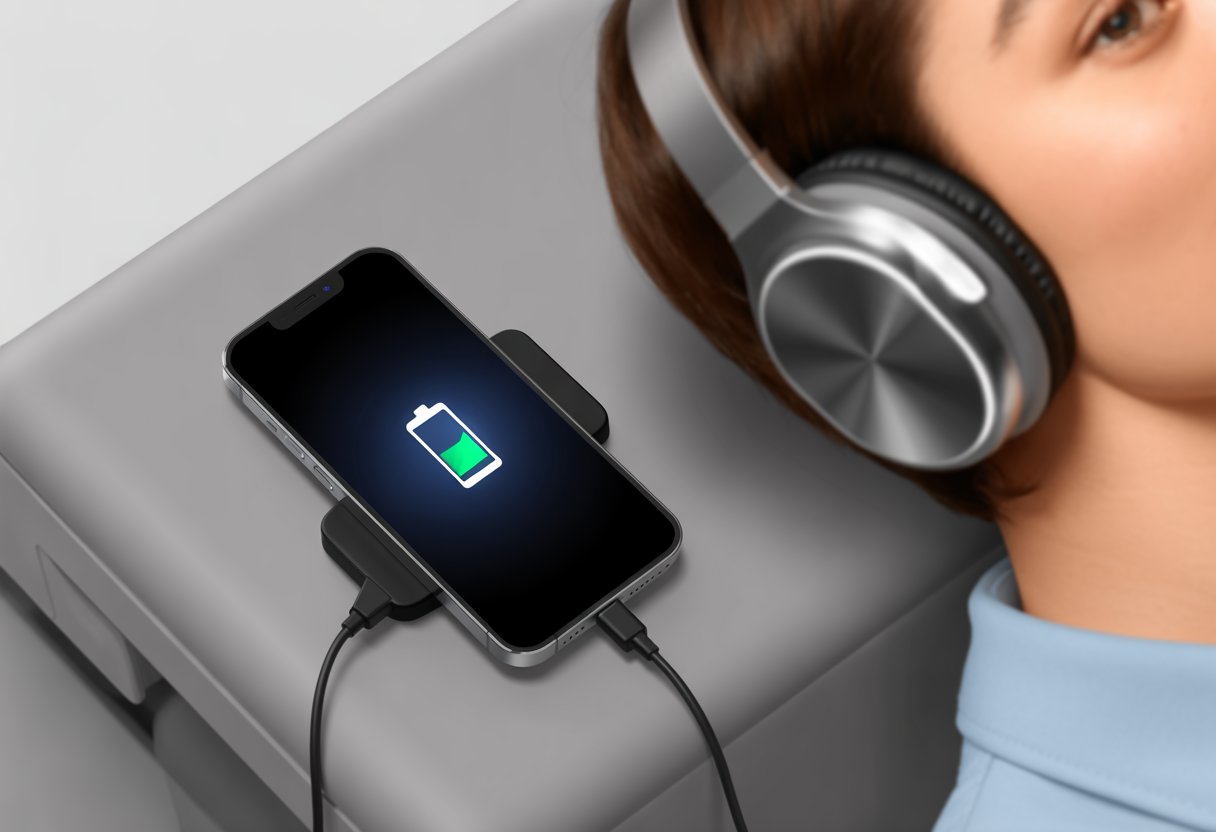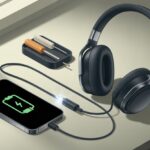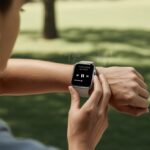Let’s be real—we’ve all been in the middle of a killer playlist when that annoying “battery low” beep interrupts everything. The obvious question hits: can we keep the music going while our Bluetooth headphones are plugged in? Or are we sentenced to silence every time we need a quick charge? Most Bluetooth headphones stop working during charging, but a few models actually let you listen and charge at the same time.

This isn’t just some random tech inconvenience. Brands really worry about battery safety, and they want to keep those tiny batteries from overheating. Companies like JBL do make models that work while charging—for those of us who just can’t pause the music. You can check details for JBL models or poke around for Sony advice if you’re curious.
So, do we really have to step away from our tunes every time the battery dips? Not always! Some headphones play while charging, and there might be a workaround for the rest.
Understanding Bluetooth Headphones Charging
Keeping Bluetooth headphones alive isn’t just about plugging them in and crossing our fingers. There’s a little more to it—like knowing how charging works, what kind of batteries are inside, and why the right cable can make all the difference.
How Bluetooth Headphones Charge
We usually charge our wireless headphones by plugging them into a USB port. That could be the computer, a wall adapter, or just the same charger we use for our phone.
Most Bluetooth headphones have a battery light somewhere obvious. It’ll blink when we plug in the headset, saying, “Feed me,” and then turn solid once it’s full. Some lights even change color—usually red (hungry) to green (charged). Honestly, it feels a bit like taking care of a digital pet.
A full charge can take anywhere from 1 to 3 hours, depending on the model. Fancier headphones might charge faster, but even the quick ones don’t mind a little extra time—smart charging circuits help stop overcharging.
Types of Batteries Used
Bluetooth headphones almost always use lithium-ion rechargeable batteries. These are the same type you’ll find in smartphones, laptops, and those electric scooters that always seem to sneak up behind us.
Lithium-ion batteries keep headphones light and let them charge up pretty quickly. They also hold their charge well, so we’re not buying new batteries every month. Of course, they wear out after enough charging cycles. If only our coffee mugs lasted as long.
Sometimes, we see lithium-polymer batteries in the mix, but lithium-ion is the usual pick. Both types are rechargeable and built-in, and swapping them out isn’t really something most of us want to try unless we’re feeling brave.
Charging the Headset: Cables, Ports, and Chargers
Charging means hunting down the right cable. Most new headphones use USB-C, which is a lifesaver since you can plug it in either way. Older models stick with Micro-USB, which only fits if you squint and try three times.
The charger you pick matters, too. We can use a phone charger, a PC, or a portable power bank. If our headset comes with its own cable, that’s usually the safest bet. Not all chargers are equal: too much power gets things hot, too little and we’re stuck waiting forever.
If our headphones let us charge and play at the same time, great—but many don’t, because of battery protection. Most just power down while charging, so we’re left in silence while they refuel.
Is It Safe to Use Bluetooth Headphones While Charging?
Before we go wild and plug in our Bluetooth headphones while using them, let’s see what the brands say, what risks are real, and whether we’re secretly ruining our batteries by multitasking.
Manufacturer Recommendations
Let’s be honest: most of us ignore the manual and just wing it. But manufacturers actually warn us about this. Many brands, like Sony, specifically say their Bluetooth headphones aren’t supposed to be used while charging. Sometimes, when we try to turn them on after plugging in, they just refuse—like the headphones are silently judging us.
They do this to protect the battery and the headphones. According to the Sony headphone Q&A, some headphones let us listen with a cable while charging, but most cut off wireless features to avoid trouble. It’s not just to be annoying—they’re trying to keep us safe from battery disasters.
Potential Risks and Safety Concerns
Mixing charging and Bluetooth? There are some real risks. Charging any device creates heat. No one wants “toasted ear syndrome” because the battery overheated. Using headphones while charging can make them hotter than usual, and heat is basically electronics’ worst enemy.
Plus, a bad cable or a little spark can cause electrical shorts. Some brands design their headphones to shut down during charging, probably because they don’t trust us (and, honestly, maybe they shouldn’t).
Safety checklist:
- Don’t use damaged or sketchy charging cables
- Keep Bluetooth headphones away from water while charging
- If your headphones feel hot, unplug them right away
Effects on Battery Life
Will using Bluetooth headphones while charging ruin the battery? Most experts say it’s not great. Using the device while charging makes the battery work harder, which can age it faster and shorten play time over months.
Manufacturers program headphones to stop us from using them during charging for this reason—to keep the battery healthy. Some folks online have found workarounds, but usually that just means the battery dies sooner or the headphones quit mid-song.
If we want our headphones to last, it’s smarter to avoid using Bluetooth while charging. If we really need music, using them in wired mode (if possible) is safer until the battery’s full.
Models That Support Use While Charging
Not all headphones let us listen while charging. Some brands are cool with it, but others just leave us watching the blinking light, wondering what we did to deserve this.
Popular Brands and Their Features
Headphones shutting down as soon as we plug in the charger is the worst. But here’s some good news: a few brands let us listen and charge at the same time. For example, certain JBL models—like the Quantum 350 Wireless—officially say we can use them while charging. That means more music, less waiting.
Sony’s also gotten on board with some of their wireless headphones. Many let us keep listening with a wired connection, even if Bluetooth goes to sleep during charging. It’s a lifesaver for anyone who can’t handle silence. Still, it’s always smart to check with a certified Sony dealer or just read the manual.
Some budget brands don’t offer this, and they’ll just turn off when plugged in. Checking product info online before buying can save a lot of frustration.
The Case of Bose QuietComfort 35
Let’s talk about the Bose QuietComfort 35. This headphone works for both wireless and wired use, but there’s a catch. When charging, the QC35 won’t work wirelessly. Still, you can use the included 3.5mm audio cable. If you can handle a wire for a bit, you won’t have to sit in silence.
It’s not exactly perfect wireless freedom, but at least you’re not left totally music-less. The padding’s comfy, too, so maybe that softens the disappointment.
Earbuds vs. Over-Ear Headphones
Earbuds and over-ear headphones treat charging pretty differently. Most true wireless earbuds have to be in their little charging case, so no music until they’re done. If you’re always on the move, this can be a dealbreaker.
Over-ear wireless headphones usually let you listen while charging, at least with a cable. If using headphones during charging matters to you, over-ear options are usually more forgiving.
Knowing what your headphones can do before buying—or before movie night—saves a lot of headaches. The details are buried in manuals or weird online forums, but a little research pays off with more music and fewer surprises.
Common Charging Issues and Troubleshooting
Bluetooth headphones love to throw us curveballs—turning off when we least expect it, or blinking like they’re trying to communicate in Morse code. If charging gets weird and the power lights start doing their mysterious dance, it helps to know what each signal means.
Dealing With Auto-Off Features
Our headphones love to power down to save battery, but honestly, they seem to pick the worst times. Many have an auto-off feature that kicks in when they’re idle or when we plug them in for charging.
This can be handy, but it’s also kind of a pain if we want to listen and charge at the same time. If our headphones keep shutting down, the auto-off setting might be to blame, and sometimes we just can’t turn it off or tweak it.
Some models let us change this in the app or with a button combo—check the manual (or, if you’re like me, just mash buttons and hope for the best). If there’s no way to change it, we might have to accept that our headphones enjoy their naps a bit too much during charging.
The best move? Keep the battery topped up before we really need our music fix.
Understanding Hibernation Mode
When our headphones suddenly go silent during charging, hibernation mode might be behind it. This is a built-in sleep mode that helps extend battery life and keeps things from overheating while plugged in.
It sounds dramatic, like they’re prepping for winter, but it’s really just a safety feature. Not every pair of headphones has hibernation mode, but for those that do, they usually won’t play sound while this is active.
Sometimes, unplugging the charger or resetting the headphones wakes them up. We can sometimes find info about hibernation in the user manual or support page, though it’s rarely front and center.
If our headphones won’t let us charge and listen at the same time, we’ll have to pick: power now, or tunes now.
Recognizing Battery Light Meanings
Blinking, glowing, or flashing red—headphone battery lights seem to speak their own language. Figuring out what those lights mean can save a lot of confusion.
Typically:
| Light Color | What It Means |
|---|---|
| Steady Red | Charging |
| Flashing Red | Low Battery |
| Blue/Purple | Ready to Pair/Paired |
| Green/White | Fully Charged |
Of course, every brand likes to mix up the color code—just to keep us on our toes. If we’re stuck, the official manual or troubleshooting guides usually help decode the pattern.
When in doubt, unplug and re-plug, then cross your fingers.
Environmental and Safety Tips
When we charge our Bluetooth headphones, we definitely don’t want to turn them into tiny, expensive ovens or give them an accidental bath. Let’s talk about keeping our headphones (and ourselves) safe from heat, cold, water, and those unlucky drops.
Charging Temperature Range
We really shouldn’t charge our headphones if it feels like we’re in a freezer or sitting on the sun. Most brands say to charge in a room that’s between 0°C and 35°C (32°F to 95°F).
This Goldilocks zone keeps the battery happy. Charging outside this range can cause batteries to age faster or just refuse to charge at all.
Charging in the cold? Our headphones might act like grumpy bears and not wake up. Too hot, and things could swell, melt, or, in rare cases, catch fire (nobody wants headphones to audition for a fireworks show).
Let’s stick to indoor charging when we can. If we’re curious, it’s always smart to check the user manual or label for the recommended range.
Avoiding Temperature Extremes and Direct Sunlight
Headphones aren’t sunbathers. Leaving them on a car dashboard or outside on a hot day can make them hotter than a pizza oven.
Extreme cold makes the battery sluggish, a bit like us on a rough Monday. Both high and low temperatures can mess up the internal parts and battery.
When we see a warning about avoiding direct sunlight, it’s not just for show—it’s because sun rays heat devices fast and ruin performance. So, let’s keep headphones away from windows, car dashboards, or anywhere sunlight can roast them.
Storing and charging in a shaded, cool area helps avoid a lot of battery issues and keeps things running smoothly.
Protecting From Moisture and Mechanical Shock
Ever dropped your headphones in a puddle or watched them bounce off the kitchen counter? Water and hard impacts spell trouble.
Even a splash during rain or high humidity can cause short circuits or other failures, as Google’s safety guide for earbuds points out.
Charging in a dry place is always safer. Avoid charging near sinks, bathtubs, or in humid bathrooms.
As for bumps and drops, let’s not use headphones as juggling props. Storing them in a padded case and handling them with care really helps.
Headphones are like little tech pets—they don’t like swimming or skydiving. If we keep moisture out and avoid rough handling, our Bluetooth headphones will last longer and keep us happily listening.
Alternative Listening While Charging
Trying to listen while Bluetooth headphones are charging? It’s about as effective as eating soup with a fork. But there are ways to keep the music (or podcasts or cat videos) going.
Using a Headphone Cable
Some wireless headphones sneak in a secret weapon: a headphone cable. When the battery’s dead, we can just plug in the included cable and turn our wireless headphones into old-school wired ones.
This only works if our headphones support it, though. Models like the Sony WH-1000XM4 let us keep listening with a 3.5mm audio cable, even while charging.
It’s simple, mostly—assuming we haven’t lost that tiny cord in the couch cushions. Audio might sound a bit different, and fancy features like noise canceling could be out of commission.
But hey, at least we’re not stuck in silence. Always check the headphone manual to see if this trick is possible. If not, we’ll just have to find another backup plan.
Switching to Wired Headphones or Earbuds
When my Bluetooth headphones absolutely refuse to play while charging (which, let’s be honest, most of them do), I reach for the classic wired headphones or earbuds.
Yeah, they’re not exactly stylish, and somehow they always manage to tangle themselves up when I’m not paying attention. Still, they’re always there when I need them.
I just plug them into my device’s headphone jack—or, if my phone’s one of those modern ones missing the port, I dig up an adapter. Wired headphones don’t care about battery levels; honestly, all they want is the music itself.
This move makes a lot of sense if I need to listen for a long stretch and can’t risk my wireless headphones dying in the middle of a song.
Wired headphones or earbuds keep me connected, entertained, and, I’ll admit, a little nostalgic for the days before everything went wireless.
If you want more info on listening to music or charging devices, check out this discussion on Bluetooth audio during charging.
- Best Bluetooth Headphones for Airplane Travel: Drown Out Crying Babies in Style - December 8, 2025
- How to use Bluetooth headphones with an intercom system and Finally Escape Tangled Wires - December 7, 2025
- Best Fitness Trackers for Silent Alarms: Wake Up Without the Drama - December 7, 2025






